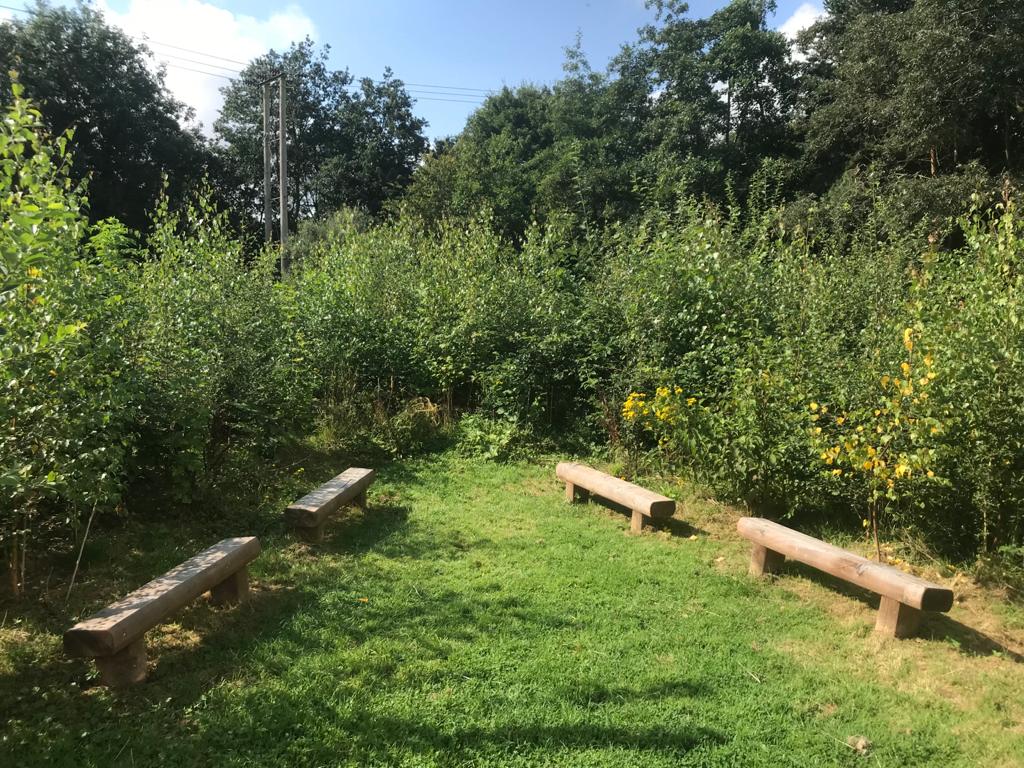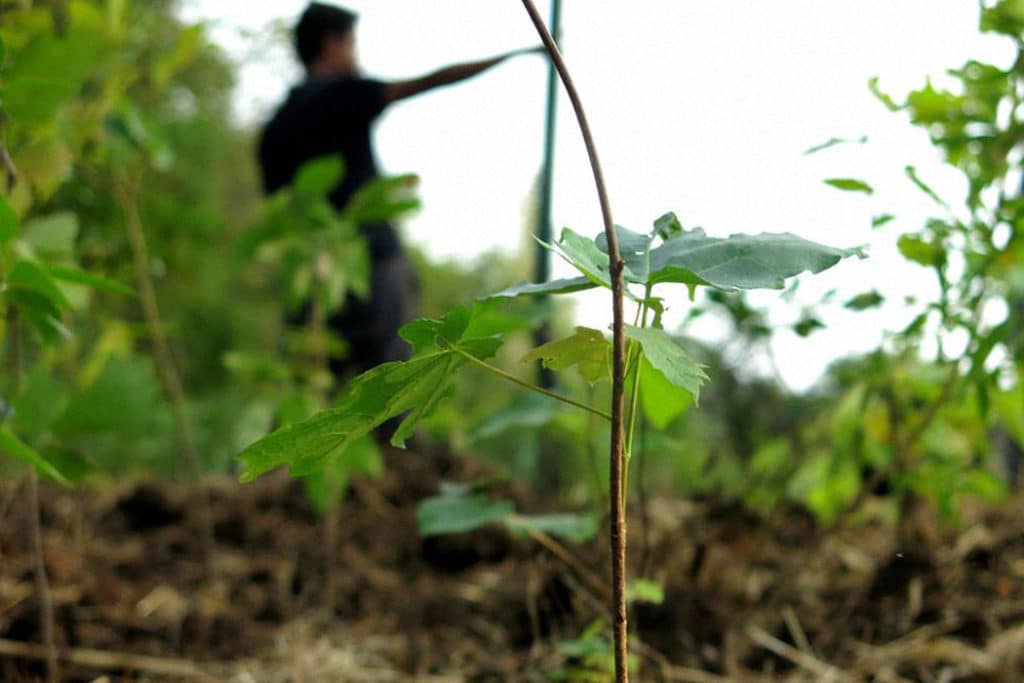Microforests, tiny and dense patches of forest, create biodiversity hotspots that help fight climate change, cool down cities, and absorb carbon.
—
Creating accessible ways to store carbon and increase biodiversity can help slow down climate change. Microforests, tiny and dense patches of forest, are becoming increasingly popular, particularly in urban areas where space is usually tight, since they can fit pretty much anywhere. While some reforestation or tree-planting projects are criticised for their lack of variety, microforests are built with forest layers. This makes them true forests where many plants, insects, and fungi can thrive.

Microforests are small, dense patches of forest plants native to the location of the forest. These tiny forests are increasingly being used as a climate change solution. Photo by Witney Tree Keepers.
Rapid deforestation means the Earth is losing some of its main sources of carbon storage and biodiversity. Less carbon stored in trees means more carbon in the air, and more carbon in the air means a warmer planet.
Both tiny forests and vast regions like the Amazon are vital to ecosystems. They contain high levels of biodiversity and absorb large amounts of carbon. Microforests are a growing trend that makes it easy to grow mature trees quickly and fight climate change even in tiny spaces. These tiny forests could also make cities cooler in a warmer climate.
You might also like: 10 Deforestation Facts You Should Know About
What Are Microforests?
A microforest is a dense, tiny forest with high biodiversity. The technique is a form of afforestation, or the act of planting a forest where there wasn’t one before. This is different than reforestation, which restores an existing forest. The challenge of both forms of planting is the method. When a single tree specie is planted over hectares of land, it creates a biological desert. These sites become mono-crop fields with few insects, animals, or other plants.
Forests need multiple layers of plant and animal life to thrive. These layers create a web of biodiversity between fungi, animals, trees, and everything in between. Each layer helps the others become healthier. Traditional forests are home to an estimated 80% of all Earth’s land-based species. Tiny forests aim to replicate that level of biodiversity on a small scale.
Microforests are planted densely and become hotspots for insects and small animals. In urban areas, patches of forest improve health, cool cities more effectively than ornamental vegetation, and remove pollutants. Urban forests have other benefits as well, including creating a buffer against disasters like tsunamis or hurricanes.
Miyawaki Tiny Forests
The technique for creating microforests was pioneered by Akiro Miyawaki, a Japanese botanist and ecologist who was inspired by Japan’s sacred forests to develop his own method of forest building. Up until his death in 2021, Miyawaki was still planting forests. Over his lifetime, he planted thousands of tiny forests of more than 40 million trees.
Miyawaki forests are the most common type of microforest. After the soil at the site is made healthy, layers of forest plants native to the location are planted at a density 20 to 30 times higher than a typical forest. Microforests are monitored for the first several years of growth to make sure they are healthy. As they compete for space, they grow an estimated 10 times faster than normal forests. Eventually, the microforests are left on their own to thrive and host insects, animals, and carbon storage.
Why is Biodiversity Important
Biodiversity comprises the variety and number of living organisms, from tiny microbes to ancient redwoods and it is immensely helpful in fighting climate change. Unfortunately, animal and plant species are declining at an alarming rate as habitats are destroyed or altered. This is being called the sixth mass extinction, with species going extinct at the fastest rate ever recorded.
Plants cannot grow without pollination, including most of the plants humans rely on for food. Changing the web of life has impacts on human health, too. Energy production, clean water, disease containment, and more all depend on rich biodiversity.
Like the human body, the planet needs everything to work together in order to thrive. A diverse ecosystem absorbs carbon better because it functions better. Thriving ecosystems also create barriers against the impacts of climate change. Strong mangrove forests prevent deadly storm surges, and flourishing forests prevent erosion and devastating megafires.
You might also like: The Remarkable Benefits of Biodiversity
Can Microforests Help Fight Climate Change?
Microforests are not going to replace the millions of hectares of native forests being lost every day, and they shouldn’t be seen as a solution to reforestation. Rather, they can replace areas that had little plant life or biodiversity in the first place. They also absorb significant amounts of carbon.
Using the Miyawaki method, microforests mature in a few decades rather than a century, meaning the mature trees can absorb high levels of carbon much sooner. More mature forests are also better at being barriers and hosting more plant and animal life.
Microforests are growing in popularity in cities all over the world, where space is tight and green spaces are slim. Some cities are even encouraging a DIY method and organisations are making microforests their mission. Because these forests are so small, building them is more easily done. However, preparing urban soil for rich plant life can result in high initial costs.
The more of these tiny forests there are, the more of a chance they have in fighting a warming climate. Each new forest will contribute to new hotspots of biodiversity, new areas of cooling, and, perhaps most importantly, new spots for carbon storage.
Growing Your Own Forest
So, what’s next for microforest?
These tiny forests could become a regular sight in most cities. Microforest organisations are already taking the lead. People are also growing tiny forests in their backyards.
Microforests aren’t going to replace the hectares of forest being lost. Dense patches of forest could help make cities more resilient to climate change, though. And the more microforests there are, the more space there is for carbon absorption and biodiversity.
Featured image by Afforestt
You might also like: 10 of the World’s Most Endangered Animals in 2022


















